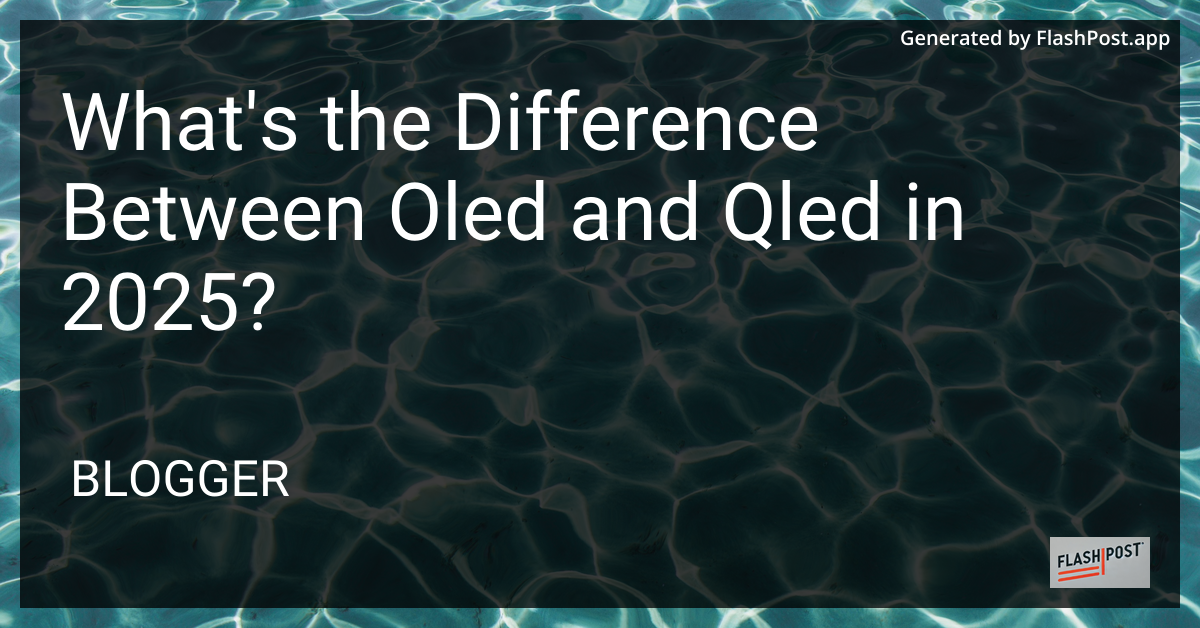What's the Difference Between Oled and Qled in 2025?

OLED vs QLED: What’s the Difference in 2025?
In the rapidly evolving world of television technology, choosing between OLED and QLED can be a daunting task. Both technologies have made significant advancements over the years, and as of 2025, they continue to vie for dominance in the premium TV market segment. In this article, we’ll break down the differences between these two popular display technologies, exploring their strengths and weaknesses to help you make an informed decision.
Understanding OLED
OLED, or Organic Light Emitting Diode, technology offers a unique benefit: each pixel emits its own light. This means that OLED screens can turn off individual pixels, allowing for true black levels and exceptional contrast. This feature is a massive boon for movie lovers and those who prefer watching content with deep blacks.
Pros of OLED in 2025
Perfect Blacks and Infinite Contrast: OLED’s self-emissive nature allows each pixel to turn off completely, resulting in perfect blacks and an infinite contrast ratio.
Faster Response Time: OLEDs have a quicker response time compared to QLEDs, making them an excellent choice for fast-paced action scenes and gaming experiences.
Viewing Angles: OLED screens offer better viewing angles compared to QLEDs, ensuring consistent picture quality from any seat in the room.
Cons of OLED in 2025
Price: OLED TVs are generally more expensive than their QLED counterparts.
Potential Burn-In: Although manufacturers have made strides to reduce burn-in, it can still occur if static images are displayed for too long.
Unpacking QLED
QLED, or Quantum Dot Light Emitting Diode, is a technology developed by Samsung that incorporates a layer of quantum dots to enhance brightness and color vibrancy. Unlike OLEDs that emit their own light, QLEDs rely on a backlighting system, typically LED.
Pros of QLED in 2025
Brightness Levels: QLED TVs can achieve higher levels of brightness than OLEDs, making them perfect for rooms with lots of natural light.
Color Volume: Thanks to quantum dot technology, QLEDs can deliver a broader spectrum of colors, providing vibrant and lifelike images.
Eco-Friendly: Advances in QLED technology have led to more environmentally friendly production processes.
Cons of QLED in 2025
Contrast and Black Levels: Since QLEDs use a separate backlight, they cannot achieve the same perfect black levels as OLEDs.
Viewing Angles: While improved, QLEDs still lag behind OLEDs when it comes to maintaining picture quality from wide viewing angles.
Conclusion
In 2025, the choice between OLED and QLED largely depends on personal preference and specific needs. If you’re seeking perfect blacks and stunning contrast, OLED may be the way to go. Conversely, if you prefer a brighter display and more vivid colors, a QLED might be more suitable. Before making a purchase, consider what aspects matter most to you in a display. Don’t forget to check out how to integrate smart technology, like using a smart speaker for TV control, into your home for a more seamless viewing experience.
In the battle of OLED vs QLED, both have their rightful place in the market, and the choice in 2025 boils down to how you prioritize brightness, color vibrancy, contrast, and budget. “`
This article is formatted in markdown and includes SEO-optimized content for “OLED vs QLED in 2025”, complete with the designated image and relevant hyperlinks.
Comments
Post a Comment